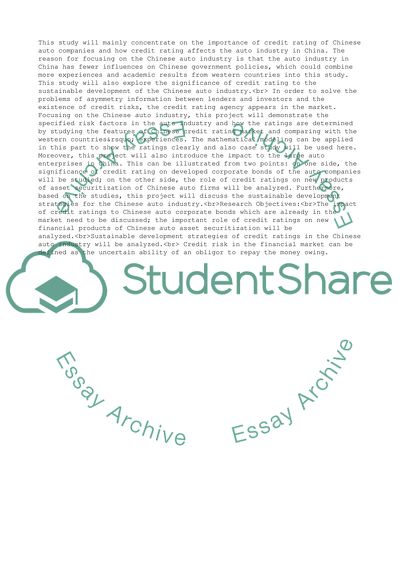Cite this document
(“The significance of credit rating on Chinese auto industry Literature review”, n.d.)
The significance of credit rating on Chinese auto industry Literature review. Retrieved from https://studentshare.org/business/1654161-the-significance-of-credit-rating-on-chinese-auto-industry
The significance of credit rating on Chinese auto industry Literature review. Retrieved from https://studentshare.org/business/1654161-the-significance-of-credit-rating-on-chinese-auto-industry
(The Significance of Credit Rating on Chinese Auto Industry Literature Review)
The Significance of Credit Rating on Chinese Auto Industry Literature Review. https://studentshare.org/business/1654161-the-significance-of-credit-rating-on-chinese-auto-industry.
The Significance of Credit Rating on Chinese Auto Industry Literature Review. https://studentshare.org/business/1654161-the-significance-of-credit-rating-on-chinese-auto-industry.
“The Significance of Credit Rating on Chinese Auto Industry Literature Review”, n.d. https://studentshare.org/business/1654161-the-significance-of-credit-rating-on-chinese-auto-industry.


